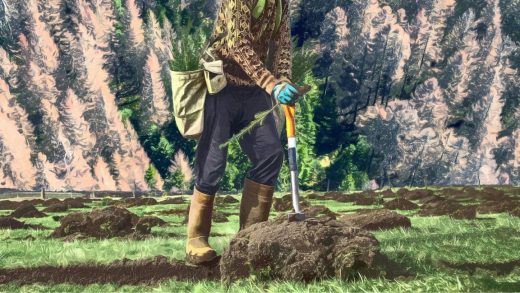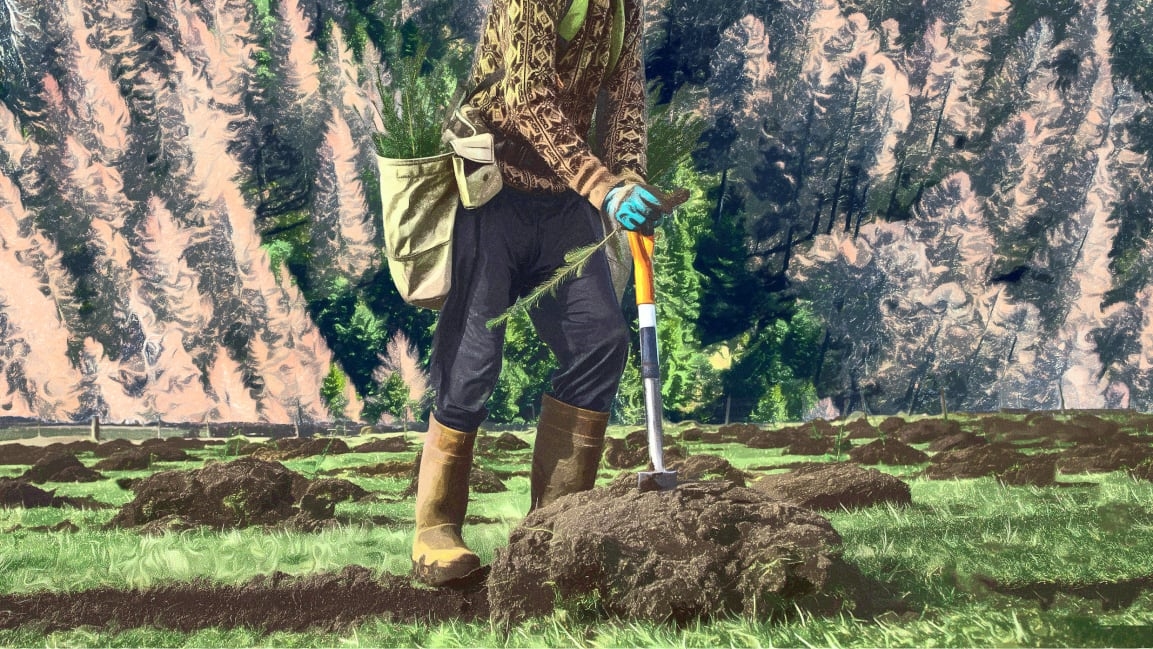Tree planting programs can actually do more harm than good
French oil giant TotalEnergies announced last November that it aims to plant 40,000 hectares (or more than 98,000 acres) of trees in the Republic of the Congo. It’s an offset program for the multinational oil company, which will ostensibly allow it to neutralize its carbon emissions; the trees will capture an estimated 10 million tons over 20 years. But the company opted to plant acacias in the Batéké Plateau, a region of savanna in Central Africa. Many experts think it’s a mismatch of environment and species, meaning the trees won’t thrive, and they’ll endanger existing ecosystems.
In the past 30 years, tree planting has increased by 288%. Trees are planted for a number of reasons: for forest restoration; to produce commodity crops like rubber; for wood supply; and by companies and organizations claiming to help combat climate change and biodiversity loss. But more often than not, it’s not done right—with groups planting species in inappropriate locations, and with a lack of follow-through to ensure trees are surviving. A new study aimed to assess the extent of this problem, finding that tree planting is extremely widespread, including in incompatible environments. As a better solution to climate change, the study’s author favors allowing the natural regrowth of forests over continued forced planting.
“I felt like we were all shouting at each other without really understanding the scale of the problem,” says lead author Matthew Fagan, an assistant professor of geography and environmental systems at the University of Maryland. Part of the issue was that tree plantations are barely tracked. “Most countries in the tropics don’t have a really good handle on how many tree plantations they have, [and] how much natural forest they have.”
Focusing on the tropics, the researchers examined high-resolution images from areas of Africa, Latin America, Southeast Asia, and Oceania, taken from orbit between 2000 and 2012, and identified both natural forests and tree plantations. Using satellite imagery and radar data, they studied 7 million unique patches of tree cover of 0.45 hectares (little more than 1 acre) or more, and differentiated the natural forests from tree plantations, which are usually the same species planted in rows. (Tree planting is often called reforestation, but that’s not quite accurate, in that they’re not always regrowing actual forests with all their inherent benefits.)
They looked at trees that were planted for all kinds of reasons. Many are planted to cultivate commodities, like palm oil and rubber, and already have a known negative impact on rainforest species. “We are essentially trading cheap oil for species that are never going to be seen again,” Fagan says. There are also those trees planted for wood supply and, sometimes, as ways to help reduce the effects of climate change through carbon sequestration programs.
“I was blown away by the scale of the problem,” Fagan says. They found that about half of all tree cover in the tropics are planted trees, many of them vast stretches of oil palm and rubber. 92% of plantations were in biodiversity hot spots, presenting a threat to existing ecosystems. They also found that plantations were encroaching on protected areas, such as national parks. The researchers looked at every protected area in the tropics, and found that, in accessible areas, about one in every 11 parks has these plantations. In Nigeria, for example, huge oil palm and rubber plantations exist in more than a third of protected park land.
Another key finding was that about 14% of the trees were planted in arid zones, in habitats like savannas and grasslands. Those are dry biomes in which trees have a hard time thriving. (Fagan likens it to planting rows of pine trees on the thriving savannas of Pride Rock in The Lion King.) Environmentally incompatible trees also can kill off existing ecosystems, destroy existing habitats for wildlife, and disturb the soil, releasing carbon. If they do survive, the trees hog water and kill off the grassland. “How we plant a tree is just as important as where do we plant a tree,” Fagan says. He says there’s often a bias for forest, but other biomes are just as important for securing climate and biodiversity.
Still, companies and organizations tout that their tree-planting schemes actually curb climate change and create habitats—such as the case with TotalEnergies. (A spokesperson for TotalEnergies did not immediately respond to Fast Company’s request for comment.) There’s a danger of greenwashing in many of these programs, whereby companies boast progressive environmental policies in order to win over consumers, when they might have unsubstantiated results.
In reality, it can take decades, even centuries for new trees to absorb carbon. Fagan says it’s preferable to let natural forests regrow. “To grow a tree, not plant it,” he says. “The rate of regrowth of trees in the tropics is incredibly high,” he adds. “They can get from open pasture to a closed rainforest that’s 10 meters high in 8 years.”
What’s more, companies, organizations, and even governments usually don’t monitor the trees they’ve planted; another study from 2021, about why companies plant trees, showed that only 5% of tropical tree-planting organizations included website information on monitoring tree survival rates and doing maintenance to keep them alive. In the Philippines, it was a biologist who ended up discovering that 80% of mangrove saplings planted by the government didn’t survive.
Fagan says there are organizations doing it right, such as One Tree Planted, which does small-scale projects, uses indigenous species, works with local ecologists, and then continues to monitor them. Also, says Fagan, it would help to have better government regulation on tree planting, and for customers to demand a change, such as in the case of oil palm trees. “We can ask more as consumers to get these companies to behave better,” he says.
In any case, natural regrowth is preferable. “The best and cheapest answer is usually just to step back and let nature do the job,” Fagan says. One standout example: Niger has managed to restore 200 million trees of natural forest, many of them the native gao tree, on over 5 million hectares (or, 12 million acres)—without having a single tree planted. “Letting natural forests regrow and protecting those forests for hundreds of years—that’s a long-term solution.”
Fast Company , Read Full Story
(31)



